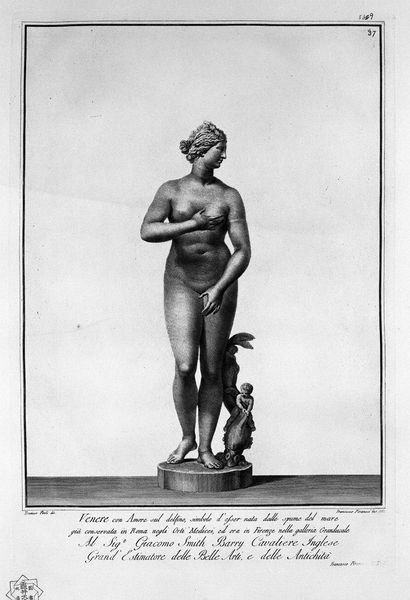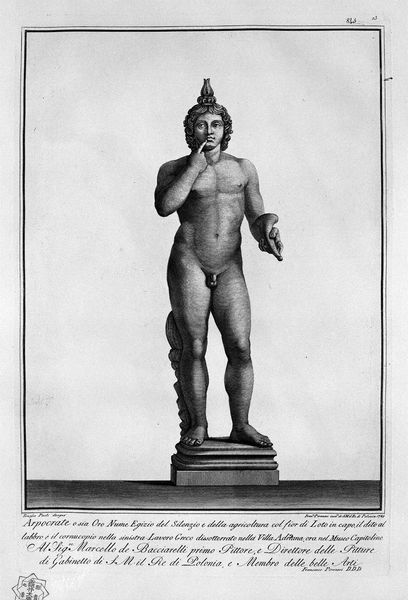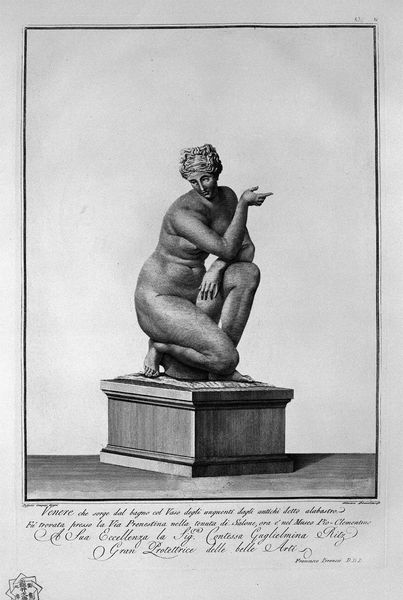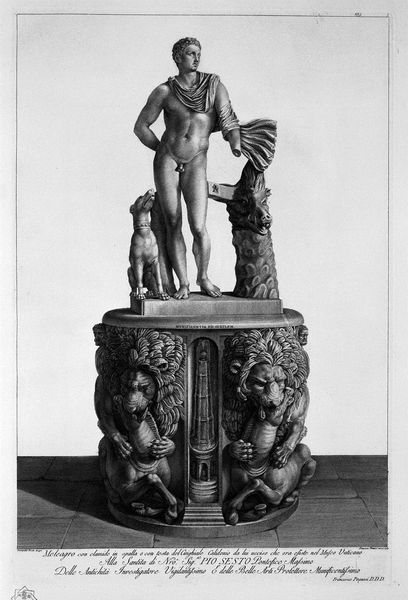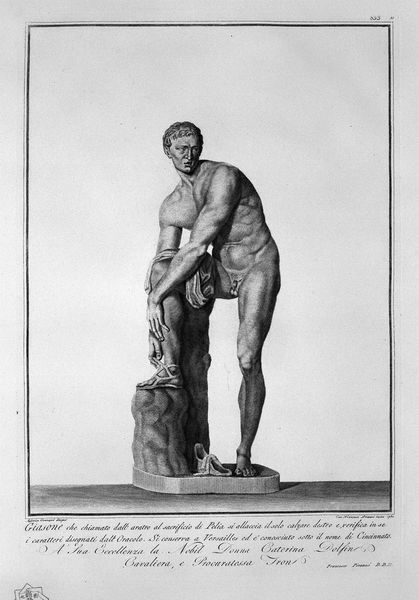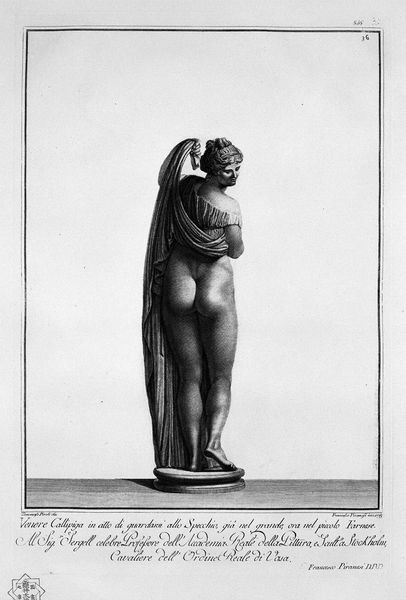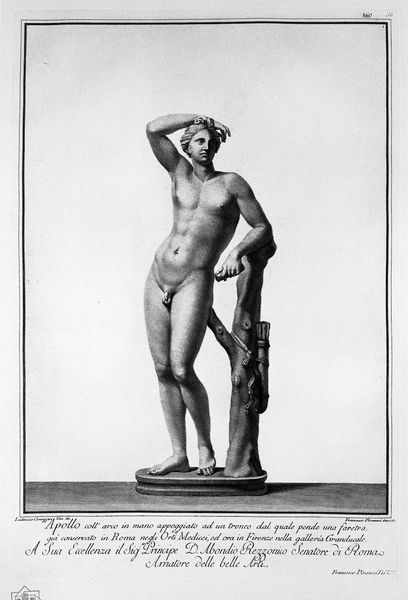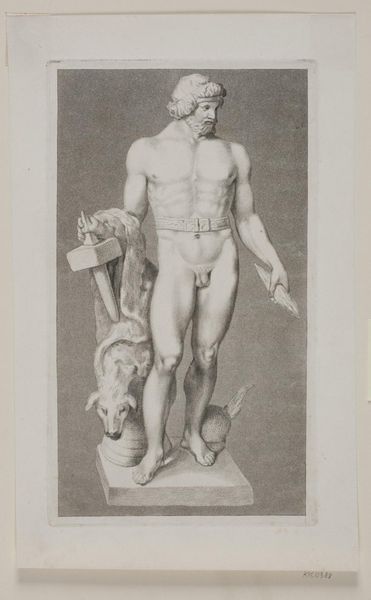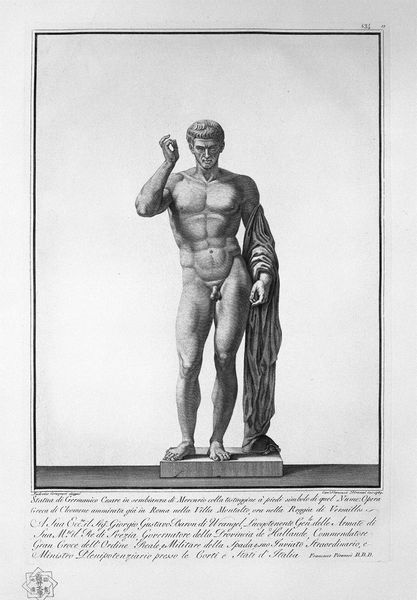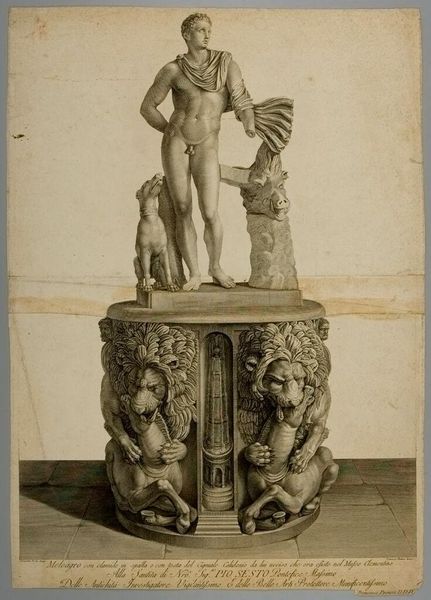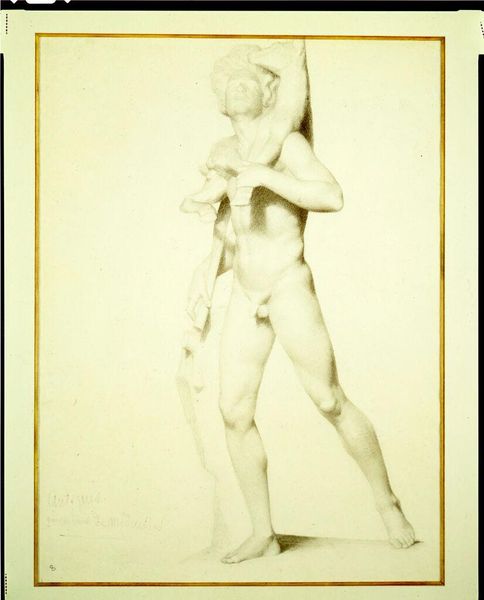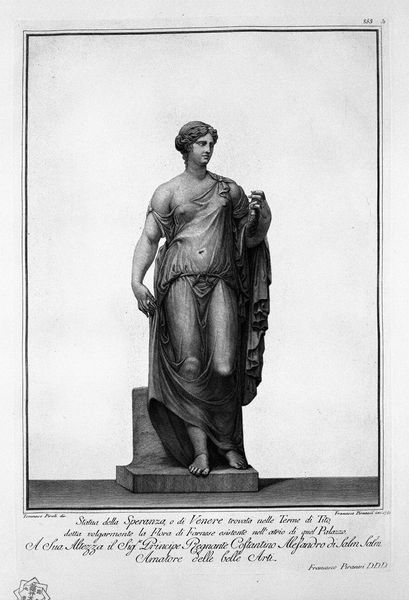
print, sculpture, engraving
#
pencil drawn
#
neoclacissism
#
statue
# print
#
greek-and-roman-art
#
figuration
#
sculpture
#
men
#
line
#
engraving
Copyright: Public domain
Curator: This engraving reproduces a sculpture of Ganymede, cupbearer to the gods, after the antique, rendered here by Giovanni Battista Piranesi. I’m immediately struck by its imposing, almost unsettling scale for what feels like a somewhat… clinical rendering. Editor: Indeed. What's immediately grabbing me is the material translation here: Piranesi taking sculpture, itself a transformation of marble or bronze, and further transforming it through engraving. It speaks to the layering of making and remaking. The linear precision he employs also mimics the chisel marks inherent in sculptural production. Curator: Exactly, and it invites us to think about Ganymede beyond just an aesthetic object. The composition reflects more than artistry; it shows cultural attitudes toward masculine beauty and power. Notice how the idealized body is juxtaposed with the commanding eagle – Jupiter’s symbol – a narrative ripe with coded power dynamics, consent and class, where Ganymede, in myth, is abducted due to his beauty. The engraving elevates, but does it also interrogate this dynamic? Editor: Right. I'm curious about the physical act of producing the print itself. Imagine Piranesi carefully etching lines, replicating the contours of muscle and feather, transforming this narrative into something reproducible and commodifiable. This act of repetitive labor mirrors the ancient artisans labor who originally carved the sculpture. How does the engraving and printing alter Ganymede’s status—does the print render him an object, or liberate the figure by granting him wider dissemination and, therefore, influence? Curator: The print also reflects Piranesi’s obsession with classical forms, fueling a neoclassical fervor. By reproducing the sculpture, he inserts himself into the lineage of both maker and myth. The figure then stands at the crux of this fascination of queer ascension and exploitation, reframed through this visual culture which serves the political and philosophical ideas of the time. It shows not only Piranesi's artistry but also his entanglement with historical ideologies. Editor: Yes, the circulation is vital. This wasn't a singular, precious artwork but a commodity disseminated through the materiality of ink and paper. These prints made it into collections and pattern books across Europe. Think about how it altered the social standing of those owning a Piranesi print, offering some form of cultural capital. We are reminded here of the means through which ancient beauty could affect societal structures. Curator: A truly multifaceted dialogue, then, sparked by line, material, myth, and its reproduction through history. Editor: A continuous, material engagement shaping the figure and our understanding through Piranesi’s skillful yet complicit hand.
Comments
No comments
Be the first to comment and join the conversation on the ultimate creative platform.
